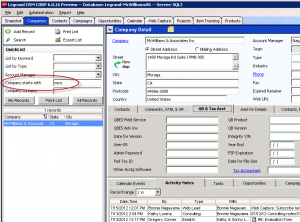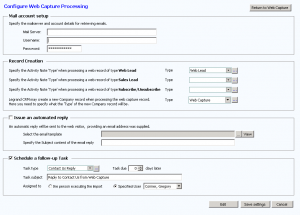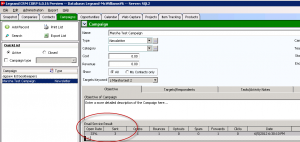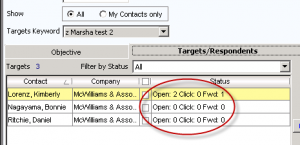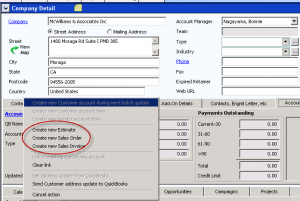15 Jul Working Remotely with Legrand CRM
Over the past 9 months we have changed how we do everything from a technology perspective. The only two exceptions are Legrand CRM (http://legrandcrm.com/) and QuickBooks Enterprise Solutions, which have remained constant. However, we did upgrade to Legrand CRM 6.0, primarily for the Constant Contact integration. In this posting we will share all the details.
Brief History
In the beginning we used ACT! then we switched to Salesforce to eliminate some of the sync issues we were experiencing. Finally, in 2005, we discovered Legrand CRM. The switch was painless (less than 1 day to get the data converted and operational) and the learning curve was very low. We have been loving it ever since.
How We Use Legrand CRM
Legrand CRM is the software that everyone uses for the complete view of what they need to do, and with whom they need to do it.
Company and Contact Information: This includes everyone we have interaction with on a daily basis. The QuickBooks integration is at the Company level, so we make sure that every contact has a company (even if the name is the same) in the event that we do need to link that person with the QuickBooks customer or vendor. From the contact (or company) we can easily see all the related information, described below. The search box of “starts with” makes finding a contact quick and easy. We have also customized the field names for our business. Some examples include time zone, which QuickBooks product and version they use, the date and size last time we checked their file, a link to their tax accountant’s record, and many other tidbits of information that make working with them more efficient.
Tasks: The task tracking is critical to our operations. In addition to entering a task for ourselves, it is also possible to enter a task for someone else in the organization. As the task is saved, an email window appears automatically so they receive notification, along with the date, contact, notes, etc. This has made a huge difference so that details don’t fall through the cracks and there is a smooth hand off from one person to another. The tasks can also be linked to a project (Customer Service Case) or opportunity.
Calendar: For those of you who work with me, you know I work almost exclusively from my calendar. It is not uncommon to hear me say, “I do whatever they have scheduled for me.” In addition to the data and time, there is a notes section which is used for a quick summary of what will be discussed, any open items from the previous call, the gotomeeting ID number, etc. To make it easier to see what is happening for the week, we each have a different color (and I have several depending on if it is billable, non-phone, etc) and if there are multiple people involved with the appointment, an icon of a couple of heads will appear.
Opportunities: Gregory is the person in our organization who works with the Opportunities module the most to track the sales leads he is working on. He is able to progress, regress and close the opportunities as needed. There are also notes, influencers and document management features. New with version 6.0 is a quotes module. From the one single screen, he can also easily navigate to calendar events, activity notes, and tasks related to the specific opportunity.
Web Capture: This is one of my favorite automation aspects of Legrand CRM from the previous version. With web capture, when someone completes the Contact Us or Ask the Expert forms on our website, an email is generated. This email is retrieved within Legrand CRM and based on the rules that have been configured, it will, at a minimum, create an activity note. However, the power is in the fact that it can also issue an automated reply and/or schedule a follow up task.
The other aspect of web capture is as it relates to the newsletter. From the newsletter sign up box on our website, the key word “Newsletter” is added to the record; we then regularly sync this keyword list with Constant Contact. That synced list is then used for the email campaign when it is sent via Constant Contact and the results of the campaign are shown in Legrand CRM’s Campaigns module as illustrated below.
From the Targets/Respondents list, it is possible to see each person from the list and if they opened, clicked through, or forwarded the email.
Note about Constant Contact: While we are very excited about the Legrand CRM integration with Constant Contact, we did run into one little glitch: Our list has been growing over the past 10+ years and we had never really done any maintenance on it. As the result of an older, single opt in list, when we uploaded the 8,000+ addresses to Constant Contact, we had a problem. They pulled a sample of 10 email addresses for us to verify with either a business card or some other verification that they asked to be on the list or, for the web sign ups, they wanted the date and time log from the web host with the IP address from the time of the addition. Many of those they pulled were from 2002, 2005, etc. so three websites and four web hosts later, this was just not practical. The bad news is that we basically have decided to start from scratch and send out a couple of emails from our old system to let people know they will need to sign up again. In the meantime, we had a website issue where it was not providing the re-direct to Constant Contact from one of the sign up pages on our site. So, we are still working through a last few issues. But, overall it is all handled and we are excited because the list is growing again at a nice pace. And we are sure that the people on the list really want to be there. This is evidenced by the newsletter sent last week with more than a 60% open rate. In discussing this topic with Alain Legrand, he had these comments, “I’m in the camp that believes it is better to have a more accurate list of people who will actually read what you have to say. The mail out becomes pointless if they don’t open your email. So I’m focusing on Open rates. There are two main things that affect Open rates: a clean list and interesting news headings. The nice thing about CTCT is the feedback you get on who opened and who did not. With large lists it takes some time to look at this data and do something useful with it but using Legrand CRM this process is now a lot quicker. “ We definitely agree and are focusing on that as well. We want to provide the information people find valuable, and we are looking forward to seeing how we do going forward as the list continues to grow.
QuickBooks Integration: In addition to the ease of use, this is probably the close second when we originally made the switch to Legrand CRM. The customers and vendors can be linked to a company in QuickBooks which means that when a call comes in, it is easy to see the notes, the amount of business that has been done, any outstanding balance or remaining retainer, as well as a direct link to the QuickBooks transactions. With version 6.0, this has been expanded to not only include a link to create a new Estimate, Sales Order, or Invoice, but to also include a Quotes module which does not require real time access to QuickBooks.
Summary
An important part of all of us working efficiently is to have a readily accessible solution that everyone can easily use, and will use consistently. Last year, we had a server crash while I was traveling. It was a problem for many reasons, not the least of which was that everyone was unable to access Legrand CRM, Outlook, everything until I could travel clear across the country to see what was going wrong. Long story short, we were up and running on RightNetworks within a day of my return complete with our Legrand database, QuickBooks data file, etc. We will provide all the details about that in a future post.
Everything goes through Legrand CRM from linking all of the email messages that are coming and going from Outlook to a link to the consulting notes stored in SmartVault (watch for this information next week). Bottom line, Legrand CRM is a critical piece of how we stay connected across 4 states and 3,500+ miles.


